 Here are two thought-provoking articles from The Guardian. They look at macroeconomic policy failures and at the likely consequences.
Here are two thought-provoking articles from The Guardian. They look at macroeconomic policy failures and at the likely consequences.
In first article, Larry Elliott, the Guardian’s Economics Editor, argues that Keynesian expansionary fiscal and monetary policy by the USA has allowed it to achieve much more rapid recovery than Europe, which, by contrast, has chosen to follow fiscal austerity policies and only recently mildly expansionary monetary policy through a belated QE programme.
In the UK, the recovery has been more significant than in the eurozone because of the expansionary monetary policies pursued by the Bank of England in its quantitative easing programme. ‘And when it came to fiscal policy, George Osborne quietly abandoned his original deficit reduction targets when the deleterious impact of an over-aggressive austerity strategy became apparent.’
So, according to Larry Elliott, Europe should ease up on austerity and governments should invest more though increased borrowing.
‘This is textbook Keynesian stuff. Unemployment is high, which means businesses are reluctant to invest. The lack of investment means that demand for new loans is weak. The weakness of demand for loans means that driving down the cost of borrowing through QE will have little impact. Therefore, it is up to the state to break into the vicious circle by investing itself, something it can do cheaply and – because there are so many people unemployed and businesses working well below full capacity – without the risk of inflation.’
In the second article, Paul Mason, the Economics Editor at Channel 4 News, points to the large increases in both public- and private- sector  debt since 2007, despite the recession. Such debt, he argues, is becoming unsustainable and hence the world could be on the cusp of another crash.
debt since 2007, despite the recession. Such debt, he argues, is becoming unsustainable and hence the world could be on the cusp of another crash.
Mason quotes from the Bank for International Settlements Quarterly Review September 2015 – media briefing. In this briefing, Claudio Borio,
Head of the Monetary & Economic Department, argues that:
‘Since at least 2009, domestic vulnerabilities have developed in several emerging market economies (EMEs), including some of the largest, and to a lesser extent even in some advanced economies, notably commodity exporters. In particular, these countries have exhibited signs of a build-up of financial imbalances, in the form of outsize credit booms alongside strong increases in asset prices, especially property prices, supported by unusually easy global liquidity conditions. It is the coincidence of the reversal of these booms with external vulnerabilities that should be watched most closely.’
 We have already seen a fall in commodity prices, reflecting the underlying lack of demand, and large fluctuations in stock markets. The Chinese economy is slowing markedly, as are several other EMEs, and Europe and Japan are struggling to recover, despite their QE programmes. The USA is no longer engaging in QE and there are growing worries about a US slowdown as growth in the rest of the world slows. Mason, quoting the BIS briefing, states that:
We have already seen a fall in commodity prices, reflecting the underlying lack of demand, and large fluctuations in stock markets. The Chinese economy is slowing markedly, as are several other EMEs, and Europe and Japan are struggling to recover, despite their QE programmes. The USA is no longer engaging in QE and there are growing worries about a US slowdown as growth in the rest of the world slows. Mason, quoting the BIS briefing, states that:
‘In short, as the BIS economists put it, this is “a world in which debt levels are too high, productivity growth too weak and financial risks too threatening”. It’s impossible to extrapolate from all this the date the crash will happen, or the form it will take. All we know is there is a mismatch between rising credit, falling growth, trade and prices, and a febrile financial market, which, at present, keeps switchback riding as money flows from one sector, or geographic region, to another.’
So should there be more expansionary policy, or should rising debt levels be reduced by tighter monetary policy? Read the articles and then consider the questions.
I told you so. Obama right and Europe wrong about way out of Great Recession The Guardian, Larry Elliott (1/11/15)
Apocalypse now: has the next giant financial crash already begun? The Guardian, Paul Mason (1/11/15)
Questions
- To what extent do the two articles (a) agree and (b) disagree?
- How might a neo-liberal economist reply to the argument that what is needed is more expansionary fiscal and monetary policies?
- What is the transmission mechanism whereby quantitative easing affects real output? Is it a reliable mechanism for policymakers?
- What would make a financial crash less likely? Is this something that governments or central banks can influence?
- Why has productivity growth been so low in many countries? What would increase it?
 The ‘Classical’ Treasury view of the 1920s and 30s was that extra government spending or tax cuts were not the solution to depression and mass unemployment. Instead, it would crowd out private expenditure if the money supply were not allowed to rise as it would drive up interest rates. But if money supply were allowed to rise, this would be inflationary. The solution was to reduce budget deficits to increase confidence in public finances and to encourage private investment. Greater price and wage flexibility were the answer to markets not clearing.
The ‘Classical’ Treasury view of the 1920s and 30s was that extra government spending or tax cuts were not the solution to depression and mass unemployment. Instead, it would crowd out private expenditure if the money supply were not allowed to rise as it would drive up interest rates. But if money supply were allowed to rise, this would be inflationary. The solution was to reduce budget deficits to increase confidence in public finances and to encourage private investment. Greater price and wage flexibility were the answer to markets not clearing.
Keynes countered these arguments by arguing that the economy could settle in a state of mass unemployment, with low confidence leading to lower consumer expenditure, lower investment, lower incomes and lower employment. The situation would be made worse, not better, by cuts in public expenditure or tax rises in an attempt to reduce the budget deficit. The solution was higher public expenditure to stimulate aggregate demand. This could be achieved by fiscal and monetary policies. Monetary policy alone could, however, be made ineffective by the liquidity trap. Extra money might simply be held rather than spent.
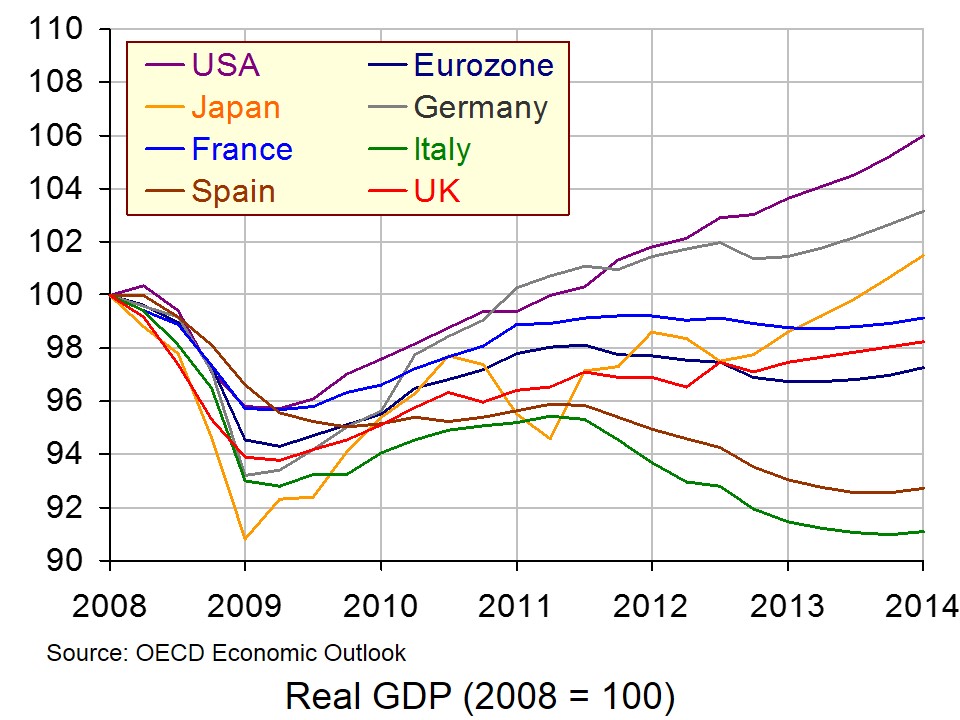 This old debate has been reborn since the financial crisis of 2007/8 and the subsequent deep recession and, more recently, the lack of recovery. (Click here for a PowerPoint of the chart.)
This old debate has been reborn since the financial crisis of 2007/8 and the subsequent deep recession and, more recently, the lack of recovery. (Click here for a PowerPoint of the chart.)
The articles below consider the current situation. Many economists, but certainly not all, take a Keynesian line that austerity policies to reduce public-sector deficits have been counter-productive. By dampening demand, such policies have reduced national income and slowed the recovery in both investment and consumer demand. This has at best slowed the rate of deficit reduction or at worst even increased the deficit, with lower GDP leading to a reduction in tax receipts and higher unemployment leading to higher government social security expenditure.
Although monetary policy has been very loose, measures such as record low interest rates and quantitative easing have been largely ineffective in stimulating demand. Economies are stuck in a liquidity trap, with banks preferring to build their reserves rather than to increase lending. This is the result partly of a lack of confidence and partly of pressure on them to meet Basel II and III requirements of reducing their leverage.
But despite the call from many economists to use fiscal policy and more radical monetary policy to stimulate demand, most governments have been pre-occupied with reducing their deficits and ultimately their debt. Their fear is that rising deficits undermine growth – a fear that was given weight by, amongst others, the work of Reinhart and Rogoff (see the blog posts Reinhart and Rogoff: debt and growth and It could be you and see also Light at the end of the tunnel – or an oncoming train?.
 But there is some movement by governments. The new Japanese government under Shinzo Abe is following an aggressive monetary policy to drive down the exchange rate and boost aggregate demand (see A J-curve for Japan?) and, more recently, the European Commission has agreed to slow the pace of austerity by giving the Netherlands, France, Spain, Poland, Portugal and Slovenia more time to bring their budget deficits below the 3% of GDP target.
But there is some movement by governments. The new Japanese government under Shinzo Abe is following an aggressive monetary policy to drive down the exchange rate and boost aggregate demand (see A J-curve for Japan?) and, more recently, the European Commission has agreed to slow the pace of austerity by giving the Netherlands, France, Spain, Poland, Portugal and Slovenia more time to bring their budget deficits below the 3% of GDP target.
Of course, whether or not expansionary fiscal and/or monetary policies should be used to tackle a lack of growth does not alter the argument that supply-side policies are also required in order to increase potential economic growth.
A Keynesian Victory, but Austerity Stands Firm The New York Times, Business Day, Eduardo Porter (21/5/13)
With Austerity Under Fire, Countries Seek a More Balanced Solution Knowledge@Wharton (22/5/13)
Keynes, Say’s Law and the Theory of the Business Cycle History of Economics Review 25.1-2, Steven Kates (1996)
Is Lord Keynes back in Brussels? The Conversation, Fabrizio Carmignani (31/5/13)
Keynes’s Biggest Mistake The New York Times, Business Day, Bruce Bartlett (7/5/13)
Keynes’s Not So Big Mistake The New York Times, The Conscience of a Liberal blog, Paul Krugman (7/5/13)
The Chutzpah Caucus The New York Times, The Conscience of a Liberal blog, Paul Krugman (5/5/13)
Keynes and Keynesianism The New York Times, Business Day, Bruce Bartlett (14/5/13)
Japan Is About To Prove Keynesian Economics Entirely Wrong Forbes, Tim Worstall (11/5/13)
The poverty of austerity exposed Aljazeera, Paul Rosenberg (24/5/13)
Britain is a lab rat for George Osborne’s austerity programme experiment The Guardian, Larry Elliott (26/5/13)
Eurozone retreats from austerity – but only as far as ‘austerity lite’ The Guardian, Larry Elliott (30/5/13)
Europe’s long night of uncertainty Daily Times (Pakistan), S P Seth (29/5/13)
Abenomics vs. bad economics The Japan Times Gregory Clark (29/5/13)
European countries to be allowed to ease austerity BBC News (29/5/13)
U.K. Should Restore Growth, Rebalance Economy IMF Survey (22/5/13)
Now everyone is a Keynesian again – except George Osborne The Observer, William Keegan (2/6/13)
Austerity Versus Growth (III): Fiscal Policy And Debt Sustainability Social Europe Journal, Stefan Collignon (30/5/13)
Questions
- Explain what is meant by Say’s Law and its implication for macroeconomic policy.
- Why have many governments, including the UK government, been reluctant to pursue expansionary fiscal policies?
- What is meant by the liquidity trap? What is the way out of this trap?
- In the first article above, Eduardo Porter argues that ‘moral views are getting in the way of reason’. What does he mean by this?
- Explain what are meant by the ‘paradox of thrift’ and the ‘fallacy of composition’. How are these two concepts relevant to the debate over austerity policies?
- What are the dangers in pursuing aggressive Keynesian policies?
- What are the dangers in not pursuing aggressive Keynesian policies?
 Much has been written on Margaret Thatcher following her death at the age of 87 on April 8. But getting a calm assessment of both her time in office and her legacy is not easy. And it’s clear why: she created both stronger loyalty and stronger opposition than any other UK Prime Minister.
Much has been written on Margaret Thatcher following her death at the age of 87 on April 8. But getting a calm assessment of both her time in office and her legacy is not easy. And it’s clear why: she created both stronger loyalty and stronger opposition than any other UK Prime Minister.
As economists, however, we should try to be as dispassionate as possible in assessing the effects of policies. There is always a normative question of the relative desirability of different economic outcomes – and you will have your own views on the relative importance of objectives such as economic growth, greater equality and greater social cohesion – but to determine cause and effect, or at least correlation, requires a careful examination of the evidence. Also, drawing lessons for future policy requires a careful modelling of the economy and the effects of changing economic variables.
The following articles have been selected from the hundreds that have appeared in the press in the past few days. Whilst they cannot be claimed to be totally ‘objective’, taken together they give a good overview of her economic policies and her economic legacy.
You may well have been surprised by the amount of coverage of her death and at the fervour of her supporters and critics. But this bears witness to the huge effect she had on both the political scene and on the UK economy – for good or bad.
Articles
Margaret Thatcher’s timeline: From Grantham to the House of Lords, via Arthur Scargill and the Falklands War Independent (8/4/13)
Overhauls Are Still Felt, Debated Decades Later Wall Street Journal, Charles Forelle (9/4/13)
Margaret Thatcher’s Four Ages of Monetary Policy EconoMonitor, David Smith (10/4/13)
How Mrs Thatcher smashed the Keynesian consensus The Economist (9/4/13)
Margaret Thatcher: The economy now and then BBC News, Stephanie Flanders (10/4/13)
Did Margaret Thatcher transform Britain’s economy for better or worse? The Guardian, Larry Elliott (8/4/13)
A look back at Margaret Thatcher’s economic record Washington Post, Dylan Matthews (8/4/13)
Margaret Thatcher’s legacy for business and economics—the world weighs in Quartz, Gwynn Guilford (8/4/13)
Data
Economic Data freely available online The Economics Network, see especially sites 1, 2, 3, 6 and 9
Questions
- Summarise the macroeconomic policies followed by the Thatcher government from 1979 to 1990.
- Chart economic growth, unemployment and inflation over Margaret Thatcher’s time in office. How does the performance of each of these indicators compare with the period from 1990 to 2007 and from 2008 to the present day?
- What is meant by ‘monetarism’? Did the Thatcher government follow pure monetarist policies?
- What is meant by the ‘Big Bang’ as applied to the financial sector in 1986? Assess the long-term consequences of the Big Bang.
- What elements of ‘Thatcherism’ were retained by the Labour government from 1997 to 2010?
- To what extent can the current Coalition government be described as ‘Thatcherite’?
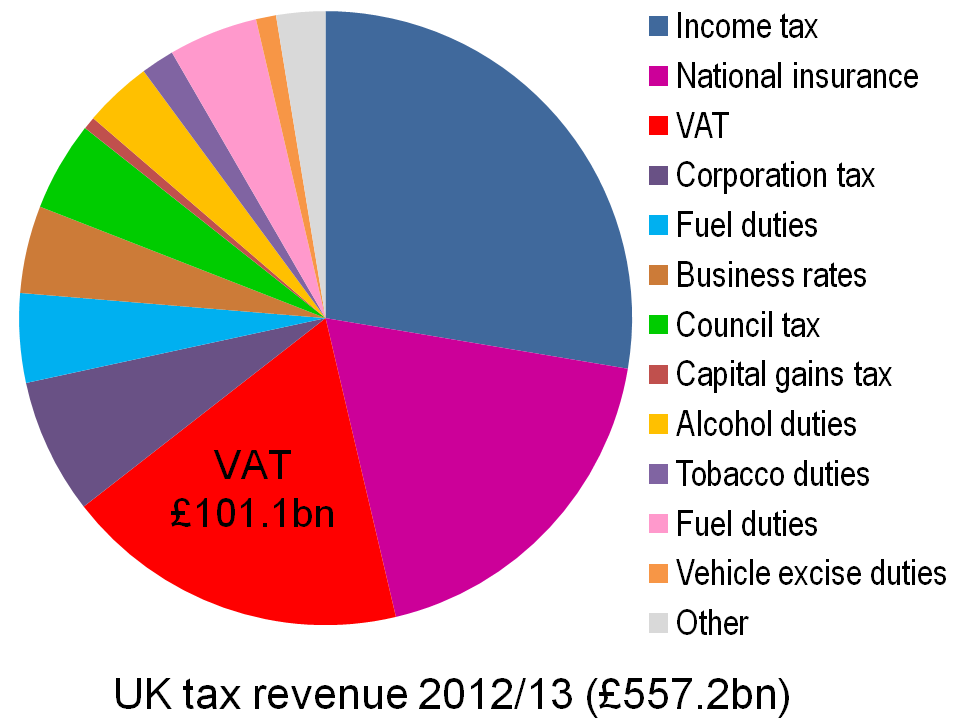 VAT was introduced on the 1st of April 1973, as part of the conditions for the UK entering the Common Market. Designed by a French tax expert, Maurice Lauré, it was initially envisaged as a straightforward replacement for purchase tax, which would be applied to most goods and services.
VAT was introduced on the 1st of April 1973, as part of the conditions for the UK entering the Common Market. Designed by a French tax expert, Maurice Lauré, it was initially envisaged as a straightforward replacement for purchase tax, which would be applied to most goods and services.
Forty years on, VAT is increasingly complex, with numerous exemptions, many anomalies in its scope, and increasingly expensive challenges to its imposition. How did we get to this point? And is it time for VAT to undergo a mid-life makeover?
All governments have to raise taxes – to redistribute income and to fund public spending. They have a number of mechanisms they can use, but essentially they have to tax incomes (direct taxes), spending (indirect taxes) or a mix of both. The main indirect tax in the UK is VAT, which now raises over £100bn a year, compared with £1.5bn in its first year (see above chart: click here for a PowerPoint version). Initially envisaged as a simple, cross-Europe purchase tax, the current system is complex and at times appears to have been formulated ‘on the hoof’, never a good way to build a tax system.
In the 2012 Budget, the Chancellor decided to apply the standard rate of income tax to hot takeaway pasties; previously they had been zero-rated. However, he had sharply underestimated the ability of the industry to lobby against the tax, working closely with the tabloid press. Perhaps more importantly, he also missed the complex nature of the good; when is a hot pasty just cooling down? And what is hot? The government backtracked and now 20% VAT is only charged on pasties that are deliberately kept hot. You might think that this change of heart avoided introducing an anomaly, but consider how you might feel if you sell takeaway baked potatoes, which are subject to VAT.
Apart from the complexity of the system, VAT is unpopular with some commentators who feel that it falls too heavily on low-income households. Although many foodstuffs are zero-rated and housing is exempt, VAT is charged at 20% on clothing and many necessities such as cleaning materials. Gas and electricity are subject to a reduced rate of 5% and both alcohol and cigarettes have additonal excise duties imposed and yet are disproportionally consumed by the poor. When the standard rate of VAT was temporarily dropped to 15% in 2010, but then permanently raised to 20% in 2011, many felt that this was a shift in the tax burden to the poor.
So complex, irrational and prone to changes following political lobbying or expensive legal cases, VAT does seem to be stumbling into its forties under something of a cloud. However, it remains the case that it raises a large proportion of UK tax revenues at relatively low direct cost and provides the Chancellor with a reasonably effective fiscal policy tool. Even if a government wanted to put in place an alternative, it is likely that the associated political risks would be too high for it to do so. We might hope for some rationalisation of the current system, but there is little doubt that we will be raising a glass to VAT’s 50th birthday in 2023.
The links below include some articles on VAT’s 40th birthday and some more general articles on VAT.
Articles
VAT is 40 years old- and now has middle-age spread The Guardian, Juliette Garside (31/1/13)
Is VAT suffering a mid-life crisis at 40? BBC News, Colin Corder (31/3/13)
VAT at 40, not simple, not popular, but central to government revenue-raising The Chartered Institute of Taxation (28/3/13)
Happy birthday VAT, here’s how not to pay you The Telegraph, Rosie Murray-West (31/3/13)
Poorest spend higher proportion of VAT than richest BBC News (31/10/11)
A Value- Added Tax offers much to love- and hate New York Times, Gregory Mankiw (1/5/10)
EC Standard VAT Declaration European Commission Roadmap (2012)
Data and information
VAT pages HMRC
Public sector finance statistics HM Treasury (follow link to latest Public finances databank (Excel file) and go to Worksheet C2)
Latest European Union EU VAT rates VATLive
Questions
- Explain why VAT might be deemed regressive. Can you formulate an argument that it falls more heavily on the rich than the poor?
- Why is VAT administratively cheap? Other than generating tax revenues, can you think of any advantages of the tax?
- Newspapers and books are zero-rated in the UK, while e-books and news apps are standard rated at 20%. Can you identify some other anomalies in the UK VAT system? Is there an argument that a better approach would be to charge a lower rate on all goods and services?
- Who pays VAT, consumers or producers? Illustrate your answer with a diagram, or two.
- A business has to register for VAT once it has a turnover of £77,000 pa. Does this system give rise to any perverse incentives?
- Countries across the European Union have varying VAT rates, applied to very different ranges of products. Explain why this might hinder the workings of a single European market.
- Imagine you were running a brand new economy; would you use a value-added tax to raise revenues? What are the alternatives open to governments?
 In a carefully argued article in the New Statesman, the UK Business Secretary, Vince Cable, considers the slow recovery in the economy and whether additional measures should be adopted. He sums up the current state of the economy as follows:
In a carefully argued article in the New Statesman, the UK Business Secretary, Vince Cable, considers the slow recovery in the economy and whether additional measures should be adopted. He sums up the current state of the economy as follows:
The British economy is still operating at levels around or below those before the 2008 financial crisis and roughly 15 per cent below an albeit unsustainable pre-crisis trend. There was next to no growth during 2012 and the prospect for 2013 is of very modest recovery.
Unsurprisingly there is vigorous debate as to what has gone wrong. And also what has gone right; unemployment has fallen as a result of a million (net) new jobs in the private sector and there is vigorous growth of new enterprises. Optimistic official growth forecasts and prophets of mass unemployment have both been confounded.
He argues that supply-side policies involving “a major and sustained commitment to skills, innovation and infrastructure investment” are essential if more rapid long-term growth is to be achieved. This is relatively uncontroversial.
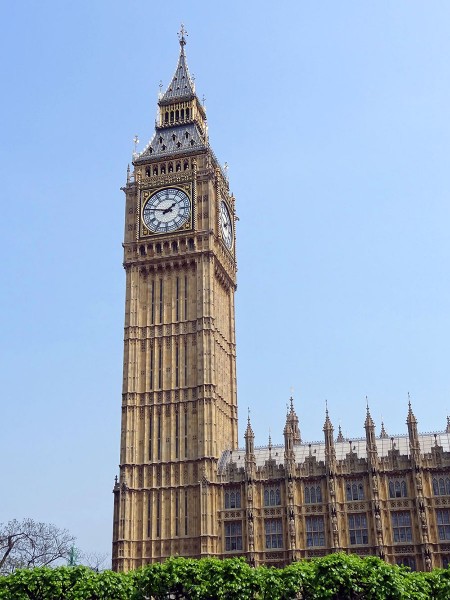 But he also considers the claim that austerity has kept the economy from recovering and whether policies to tackle the negative output gap should be adopted, even if this means a short-term increase in government borrowing.
But he also considers the claim that austerity has kept the economy from recovering and whether policies to tackle the negative output gap should be adopted, even if this means a short-term increase in government borrowing.
But crude Keynesian policies of expanding aggregate demand are both difficult to implement and may not take into account the particular circumstance of the current extended recession – or depression – in the UK and in many eurozone countries. World aggregate demand, however, is not deficient. In fact it is expanding quite rapidly, and with the sterling exchange rate index some 20% lower than before the financial crisis, this should give plenty of opportunity for UK exporters.
Yet expanding UK aggregate demand is proving difficult to achieve. Consumers, worried about falling real wages and large debts accumulated in the years of expansion, are reluctant to increase consumption and take on more debts, despite low interest rates. In the light of dampened consumer demand, firms are reluctant to invest. This makes monetary policy particularly ineffective, especially when banks have become more risk averse and wish to hold higher reserves, and indeed are under pressure to do so.
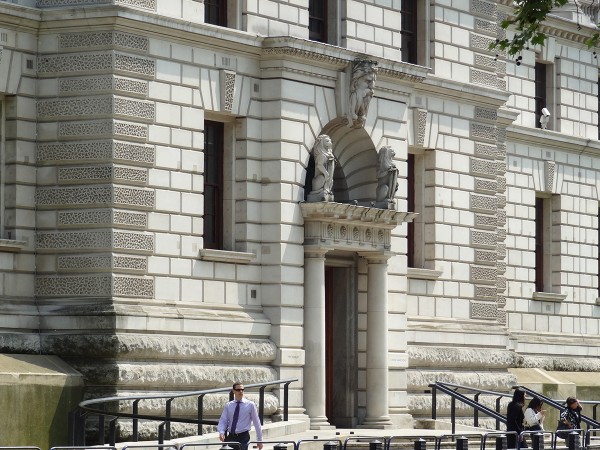 So what can be done? He argues that there is “some scope for more demand to boost output, particularly if the stimulus is targeted on supply bottlenecks such as infrastructure and skills.” In other words, he advocates policies that will simultaneously increase both aggregate demand and aggregate supply. Monetary policy, involving negative real interest rates and quantitative easing, has helped to prevent a larger fall in real aggregate demand and a deeper dive into recession, but the dampened demand for money and the desire by banks to build their reserves has meant a massive fall in the money multiplier. Perhaps monetary policy needs to be more aggressive still (see the blog post, Doves from above), but this may not be sufficient.
So what can be done? He argues that there is “some scope for more demand to boost output, particularly if the stimulus is targeted on supply bottlenecks such as infrastructure and skills.” In other words, he advocates policies that will simultaneously increase both aggregate demand and aggregate supply. Monetary policy, involving negative real interest rates and quantitative easing, has helped to prevent a larger fall in real aggregate demand and a deeper dive into recession, but the dampened demand for money and the desire by banks to build their reserves has meant a massive fall in the money multiplier. Perhaps monetary policy needs to be more aggressive still (see the blog post, Doves from above), but this may not be sufficient.
Which brings Dr Cable to the political dynamite! He advocates an increase in public investment on infrastructure (schools and colleges, hospitals, road and rail projects and housing, and considers whether this should be financed, not by switching government expenditure away from current spending, but by borrowing more.
Such a strategy does not undermine the central objective of reducing the structural deficit, and may assist it by reviving growth. It may complicate the secondary objective of reducing government debt relative to GDP because it entails more state borrowing; but in a weak economy, more public investment increases the numerator and the denominator.
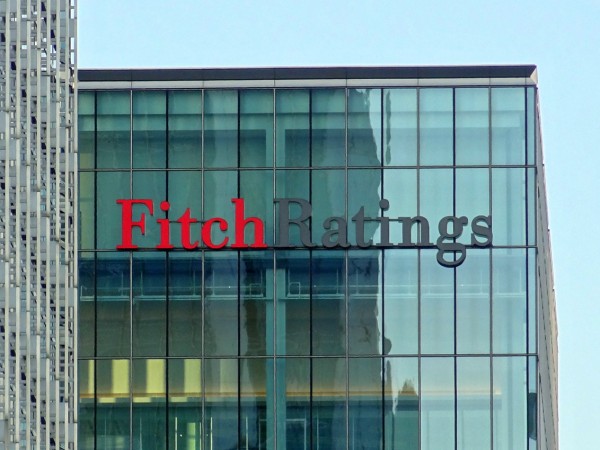 He raises the question of whether the balance of risks has changed: away from the risk of increased short-term borrowing causing a collapse of confidence to the risk of lack of growth causing a deterioration in public finances and this causing a fall in confidence. As we saw in the blog post Moody Blues, the lack of growth has already caused one ratings agency (Moody’s) to downgrade the UK’s credit rating. The other two major agencies, Standard & Poor’s and Fitch may well follow suit.
He raises the question of whether the balance of risks has changed: away from the risk of increased short-term borrowing causing a collapse of confidence to the risk of lack of growth causing a deterioration in public finances and this causing a fall in confidence. As we saw in the blog post Moody Blues, the lack of growth has already caused one ratings agency (Moody’s) to downgrade the UK’s credit rating. The other two major agencies, Standard & Poor’s and Fitch may well follow suit.
The day after Dr Cable’s article was published, David Cameron gave a speech saying that the government would stick to its plan of deficit reduction. Not surprisingly commentators interpreted this as a split in the Coalition. Carefully argued economics from Dr Cable it might have been, but political analysts have seen it as a hand grenade, as you will see from some of the articles below.
When the facts change, should I change my mind? New Statesman, Vince Cable (6/3/13)
Keynes would be on our side New Statesman, Vince Cable (12/1/11)
Exclusive: Vince Cable calls on Osborne to change direction New Statesman, George Eaton (67/3/13)
Vince Cable: Borrowing may not be as bad as slow growth BBC News (7/3/13)
Vince Cable makes direct challenge to Cameron over economic programme The Guardian, Nicholas Watt (7/3/13)
Vince Cable Says George Osborne Must Change Course And Borrow More To Revive Growth Huffington Post, Ned Simons (6/3/13)
David Cameron and Vince Cable at war over route to recovery Independent, Andrew Grice (6/3/13)
 Vince Cable: Borrowing may not be as bad as slow growth BBC News, James Landale (6/3/13)
Vince Cable: Borrowing may not be as bad as slow growth BBC News, James Landale (6/3/13)
David Cameron: We will hold firm on economy BBC News (7/3/13)
 David Cameron: We will hold firm on economy BBC News (7/3/13)
David Cameron: We will hold firm on economy BBC News (7/3/13)
 Clegg Backs Cable Over Controversial Economy Comments LBC Radio, Nick Clegg (7/3/13)
Clegg Backs Cable Over Controversial Economy Comments LBC Radio, Nick Clegg (7/3/13)
It’s plain what George Osborne needs to do – so just get on and do it The Telegraph, Jeremy Warner (6/3/13)
Vince Cable’s plan B: a “matter of judgement” BBC News, Stephanie Flanders (7/3/13)
George Osborne needs to turn on the spending taps The Guardian, Phillip Inman (12/3/13)
Questions
- Why has monetary policy proved ineffective in achieving a rapid recovery from recession?
- Distinguish between discretionary fiscal policy and automatic fiscal stabilisers.
- Why has the existence of automatic fiscal stabilisers meant that the public-sector deficit has been difficult to bring down?
- In what ways has the balance of risks in using discretionary fiscal policy changed over the past three years?
- In what ways is the depression of the late 2000s/early 2010s (a) similar to and (b) different from the Great Depression of the early 1930s?
- In what ways is the structure of public-sector debt in the UK different from that in many countries in the eurozone? Why does this give the government more scope for expansionary fiscal policy?
- Why does the Office of Budget Responsibility’s estimates of the tax and government expenditure multipliers suggest that “if fiscal policy is to work in a Keynesian manner, it needs to be targeted carefully, concentrating on capital projects”?
- Why did Keynes argue that monetary policy is ineffective at the zero bound (to use Dr Cable’s terminology)? Are we currently at the zero bound? If so what can be done?
- Has fiscal tightening more than offset loose monetary policy?
 Here are two thought-provoking articles from The Guardian. They look at macroeconomic policy failures and at the likely consequences.
Here are two thought-provoking articles from The Guardian. They look at macroeconomic policy failures and at the likely consequences. debt since 2007, despite the recession. Such debt, he argues, is becoming unsustainable and hence the world could be on the cusp of another crash.
debt since 2007, despite the recession. Such debt, he argues, is becoming unsustainable and hence the world could be on the cusp of another crash. We have already seen a fall in commodity prices, reflecting the underlying lack of demand, and large fluctuations in stock markets. The Chinese economy is slowing markedly, as are several other EMEs, and Europe and Japan are struggling to recover, despite their QE programmes. The USA is no longer engaging in QE and there are growing worries about a US slowdown as growth in the rest of the world slows. Mason, quoting the BIS briefing, states that:
We have already seen a fall in commodity prices, reflecting the underlying lack of demand, and large fluctuations in stock markets. The Chinese economy is slowing markedly, as are several other EMEs, and Europe and Japan are struggling to recover, despite their QE programmes. The USA is no longer engaging in QE and there are growing worries about a US slowdown as growth in the rest of the world slows. Mason, quoting the BIS briefing, states that:








